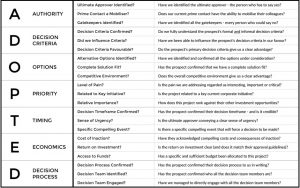Did you know that companies with omnichannel customer engagement strategies retain on average 89% of their customers? This is compared to a 33% customer retention rates for companies with weak omnichannel strategies. (Invesp)
What exactly does it mean to be omnichannel?
According to Wikipedia, omnichannel uses a variety of channels in a customer’s shopping experience including research before a purchase. Such channels include stores, online stores, mobile stores, mobile app stores, telephone sales and any other method of transacting with a customer.
Whatis.com defines omnichannel as a multichannel approach to sales that seeks to provide the customer with a seamless shopping experience whether the customer is shopping online from a desktop or mobile device, by telephone or in a bricks and mortar store.

How do consumers shop across channels?
Here are 14 statistics that give further insights into the shopping behaviors of today’s typical consumer:
1. 98% of Americans switch between devices in the same day. (Google Research)
2. 15 years ago the average consumer typically used two touch-points when buying an item and only 7% regularly used more than four. Today consumers use an average of almost six touch-points with nearly 50% regularly using more than four. (Marketing Week)
3. Over 35% of customers expect to be able to contact the same customer service representative on any channel. (Zendesk)
4. 64% of customers expect to receive real-time assistance regardless of the customer service channel they use. (Zendesk)
5. 61% of customers have not been able to easily switch from one channel to another when interacting with customer service. (Aspect)
6. 90% of customers expect consistent interactions across channels. (SDL)
7. 71% of shoppers who use smartphones for research in-store say that it’s become an important part of the experience. (Google)
8. Omnichannel shoppers have a 30% higher lifetime value than those who shop using only one channel. (Google)
9. 45% of shoppers expect in-store expect sales associates to be knowledgeable about online-only products. (Forrester)
10. 71% of shoppers agree that it is important or very important to be able to view inventory information for in-store products. (Forrester)
11. 50% of shoppers expect that they will be able to make a purchase online and pick up in-store. (Forrester)
12. 39% of consumers are unlikely or very unlikely to visit a retailer’s store if the online store does not provide physical store inventory information. (Forrester)
13. 56% of consumers have used their mobile device to research products at home with 38% having used their mobile device to check inventory availability while on their way to a store and 34% who have used their mobile device to research products while in a store. (Forrester)
14. 27% of consumers would be very likely to leave and visit another retailer’s store if a product is out of stock with 21% stating they would buy online from a different retailer and 21% who would simply hold off buying the product.
3 Strategies to Wow your Customers with Omnichannel Experiences
One: Understand Your Customers’ Behaviors and Purchase Journeys
To deliver rich customer experiences, you need to know them better than ever. However, according to Experian’s 2016 Digital Marketing Report, an astounding 81% of marketers report having challenges achieving a single customer view. The top reasons cited include:
- 54% – Do not have the technology to integrate customer data in real time
- 49% – Inability to integrate multiple data sources and technologies
- 48% – Limited access to data from across the organization

Brands who have implemented strategies to successfully meet consumers’ expectations understand that fundamental to this success is data – the RIGHT data, integrated in real-time. Internal 1st party data sets must be enhanced with additional 3rd party demographics. Basic characteristics such as age, income level, and occupation must be augmented with richer insights into needs, wants, and attitudes.
Two: Automate the Customer Journey
In order to deliver a seamless cross-channel experience, marketers need an adaptable and integrated way to automate the customer journey, one that’s personal and that can automatically be replicated thousands of times over. A study by Autopilot found that companies who stay in touch with customers every two to four weeks generate twice the leads of companies who touch base less frequently. By automating the customer journey with personalized content and messaging, you can ensure you automatically respond to behavior every time without missing a beat.
For example, using workflow designers, marketers can easily build customer journeys that contain a range of decision points for evaluation and execution of a next best action. With these all-in-one solutions, analytic tools can be used to create customer segments in the journey. Messages can be delivered automatically through email, mobile, phone, direct mail, social and targeted ads. Just as importantly, as marketing shifts from a real-time mode of thought to that of the RIGHT time, customer journey technologies can build in “pauses” to allow customers to evaluate your offers or just listen until an action is completed.
Three: Integrate Your Channels
It’s not enough to simply have a presence on multiple channels – each of your channels needs to talk to one another. Imagine the challenges if you operate multiple channels independently rather than collectively. For example, you might sell out of a certain item without that being reflected on those channels, risking disappointing or angering a shopper attempting to purchase that item. That negative experience can lead to poor reviews and word-of-mouth, as well as loss of future business.
Point of sales systems, for example, can aggregate inventory in a store or across multiple locations. By implementing a system to handle these operational logistics, business can be streamlined and made more efficient to meet customer demands.
Just as important, customer information needs to be made available across each channel. Whether a customer is shopping on a website, calling customer service, or in a physical information, a 360-degree customer view needs to be available within each channel.

So, for example, Mary, a valued customer, has placed multiple orders online over the course of several months. She also redeems print coupons at physical locations when they are mailed to her but has unsubscribed from several promotional email lists due to irrelevant content. Each of these interactions with Mary contains important details about her preferences. However, if this information is stored in separate systems, such as POS, e-commerce, and email, the marketing department will have no way to understand what is driving Mary’s behavior across channels.
By establishing a single view of Mary, she can be emailed offers tailored to her unique needs and interests. Or by arming customer-service centers with integrated information, a service representative can determine that Mary is a high-value customer and can give her the proper attention if she calls customer service with a complaint. Personalized recommendations can also be presented to her when she shops online.
Brands who invest in omnichannel strategies will see high gains. Companies with extremely strong omnichannel customer engagement see a 9.5% year-over-year increase in annual revenue, compared to 3.4% for weak omnichannel companies. Similarly, strong omnichannel companies see a 7.5% year-over-year decrease in cost per contact, compared to a 0.2% year-over-year decrease for weak companies. (Aberdeen Group)
Business & Finance Articles on Business 2 Community(145)
Report Post







